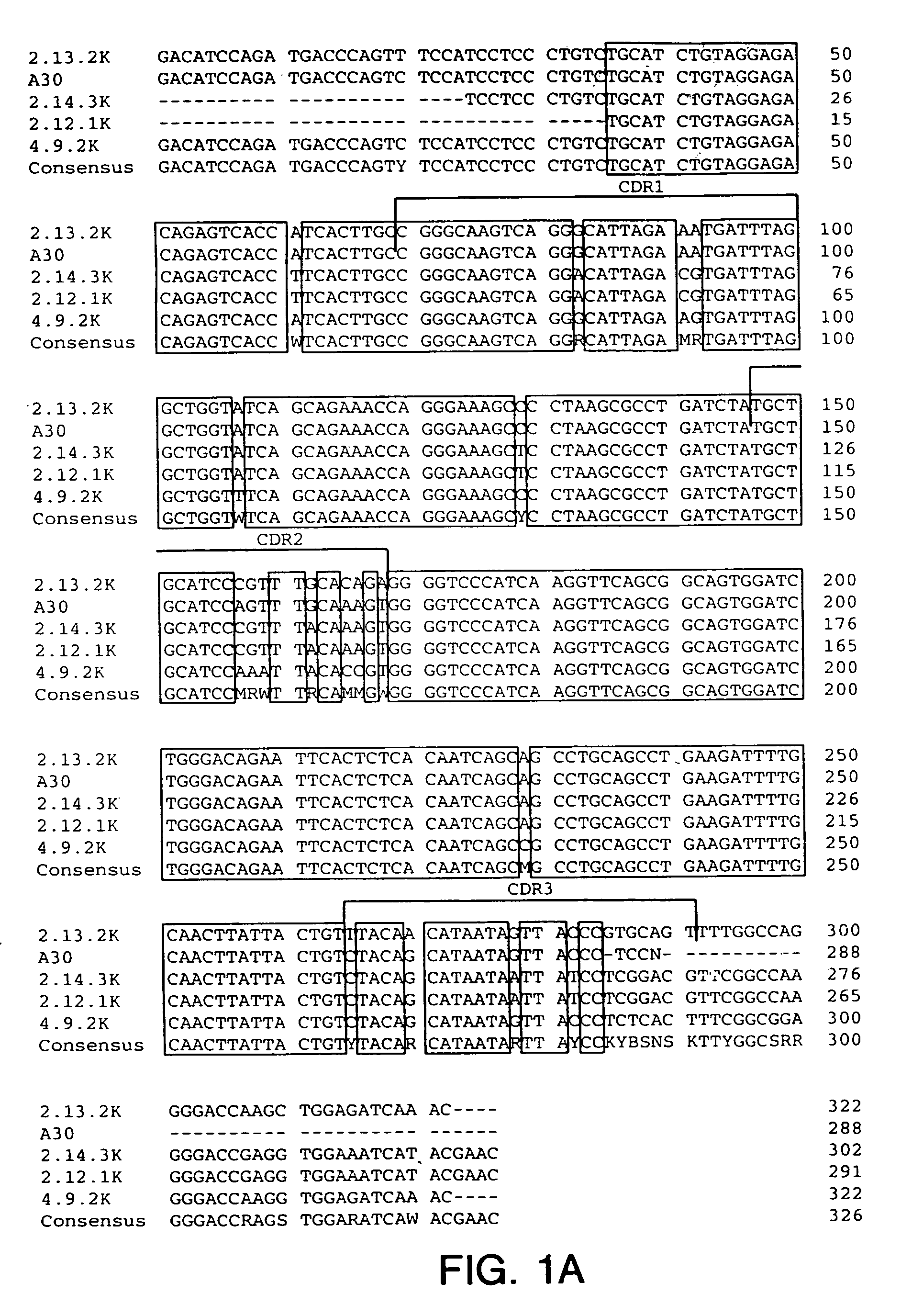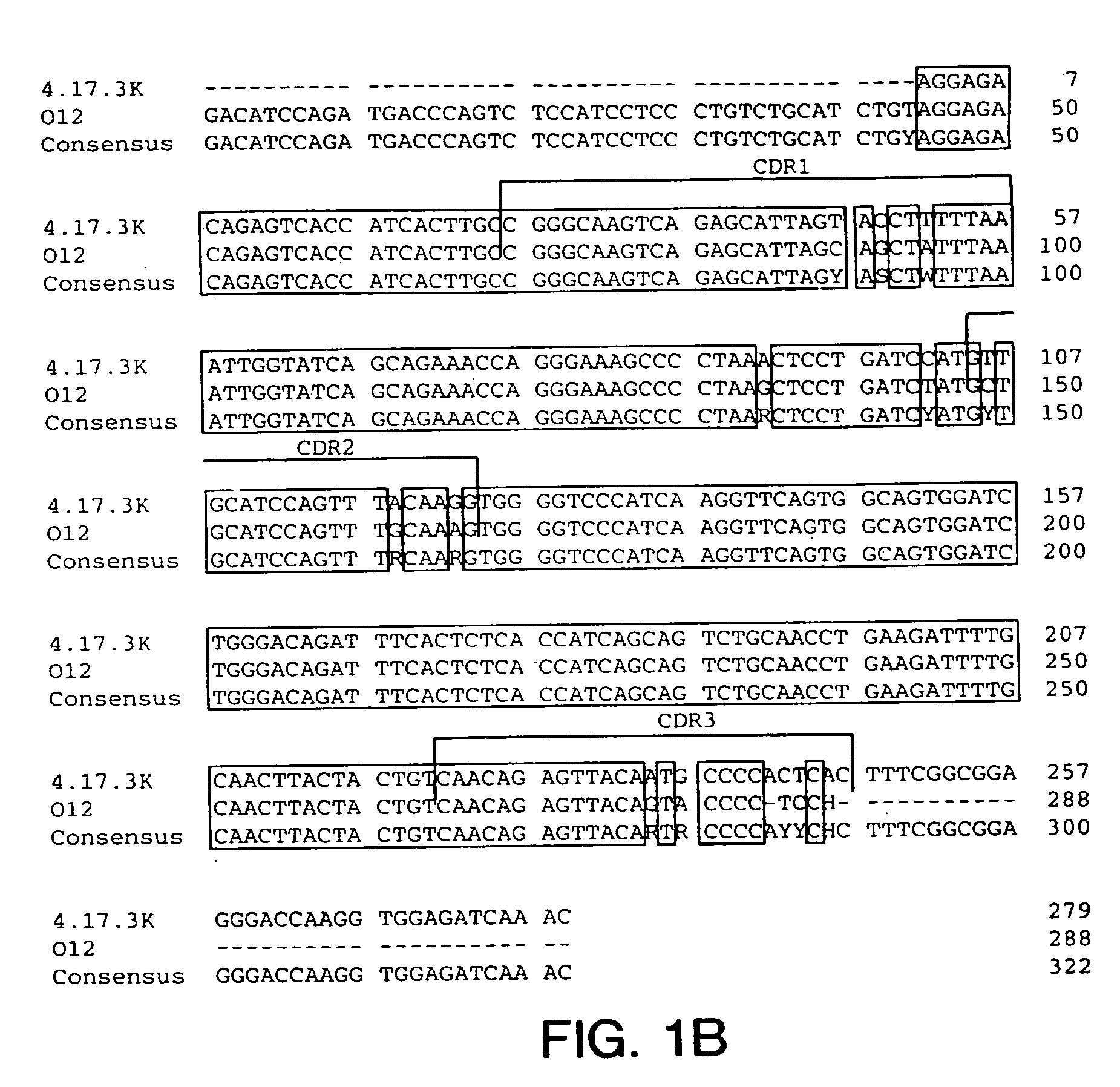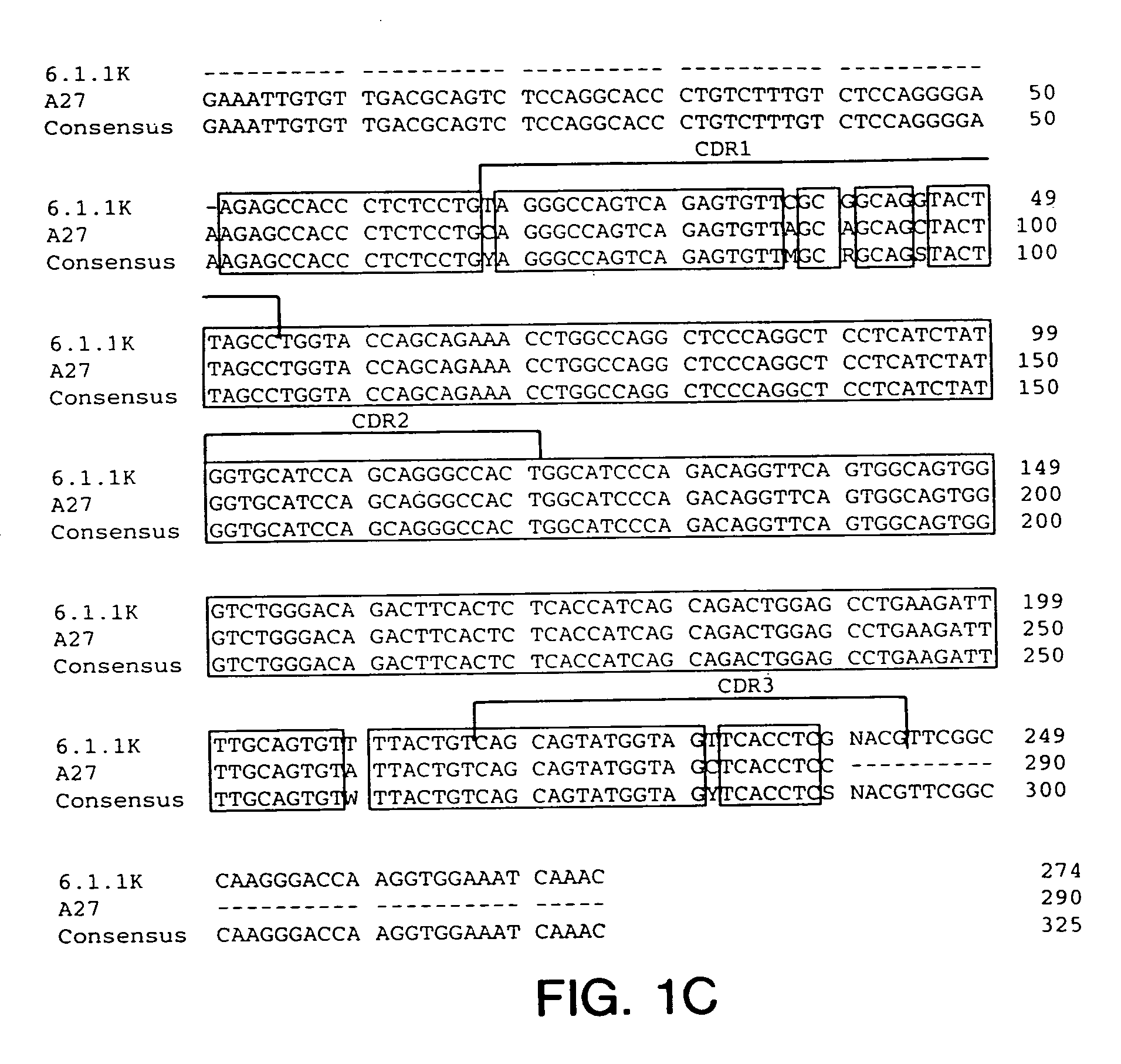Antibodies to insulin-like growth factor I receptor
a technology of growth factor and receptor, which is applied in the field of antibodies to the insulinlike growth factor i receptor, can solve the problems of increased igf-i levels, increased risk of common cancer, and inability to long-term administer compounds to human patients,
- Summary
- Abstract
- Description
- Claims
- Application Information
AI Technical Summary
Benefits of technology
Problems solved by technology
Method used
Image
Examples
example i
Generation of Hybridomas Producing Anti-IGF-IR Antibody
[0217] Antibodies of the invention were prepared, selected, and assayed as follows:
Immunization and Hybridoma Generation
[0218] Eight to ten week old XENOMICE™ were immunized intraperitoneally or in their hind footpads with either the extracellular domain of human IGF-IR (10 μg / dose / mouse), or with 3T3-IGF-IR or 300.19-IGF-IR cells, which are two transfected cell lines that express human IGF-IR on their plasma membranes (10×106 cells / dose / mouse). This dose was repeated five to seven times over a three to eight week period. Four days before fusion, the mice received a final injection of the extracellular domain of human IGF-IR in PBS. Spleen and lymph node lymphocytes from immunized mice were fused with the non-secretory myeloma P3-X63-Ag8.653 cell line and were subjected to HAT selection as previously described (Galfre and Milstein, Methods Enzymol. 73:3-46, 1981). A panel of hybridomas all secreting IGF-IR specific human IgG...
example ii
Determination of Affinity Constants (Kd) of Fully Human Anti-IGF-IR Monoclonal Antibodies by BIAcore
[0220] We performed affinity measures of purified antibodies by surface plasmon resonance using the BIAcore 3000 instrument, following the manufacturer's protocols.
Protocol 1
[0221] To perform kinetic analyses, protein-A was immobilized on the sensorchip surfaces of the BIAcore. The sensorchip was then used to capture the anti-IGF-IR antibodies of the present invention. Different concentrations of the extracellular domain of IGF-IR were injected on the sensorchip and the binding and dissociation kinetics of the interactions between the anti-IGF-IR antibodies and the extracellular domain of IGF-IR were analyzed. The data were evaluated with global fit Langmuir 1:1, using baseline drift models available on the BIAevaluation software provided by BIAcore.
Protocol 2
[0222] BIAcore measurements were performed essentially as described by Fagerstam et al. “Detection of antigen-antibody i...
example iii
Antibody-Mediated Inhibition of IGF-I-induced Phosphorylation of IGF-IR
[0225] We performed ELISA experiments in order to determine whether the antibodies of this invention were able to block IGF-I-mediated activation of IGF-IR. IGF-I-mediated activation of IGF-IR was detected by increased receptor-associated tyrosine phosphorylation.
ELISA Plate Preparation
[0226] We prepared ELISA capture plates by adding 100 μl blocking buffer (3% bovine serum albumin [BSA] in Tris-buffered saline [TBS]) to each well of a ReactiBind Protein G-coated 96-well plates (Pierce) and incubated the plates with shaking for 30 minutes at room temperature. We diluted rabbit pan-specific SC-713 anti-IGF-IR antibody (Santa Cruz) in blocking buffer to a concentration of 5 μg / ml and added 100 μl diluted antibody to each well. We incubated the plates with shaking for 60-90 minutes at room temperature. We then washed the plates five times with wash buffer (TBS+0.1% Tween 20) and gently blotted the remaining buff...
PUM
| Property | Measurement | Unit |
|---|---|---|
| W/W | aaaaa | aaaaa |
| W/W | aaaaa | aaaaa |
| W/W | aaaaa | aaaaa |
Abstract
Description
Claims
Application Information
 Login to View More
Login to View More - R&D
- Intellectual Property
- Life Sciences
- Materials
- Tech Scout
- Unparalleled Data Quality
- Higher Quality Content
- 60% Fewer Hallucinations
Browse by: Latest US Patents, China's latest patents, Technical Efficacy Thesaurus, Application Domain, Technology Topic, Popular Technical Reports.
© 2025 PatSnap. All rights reserved.Legal|Privacy policy|Modern Slavery Act Transparency Statement|Sitemap|About US| Contact US: help@patsnap.com



